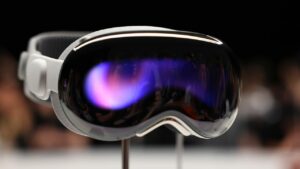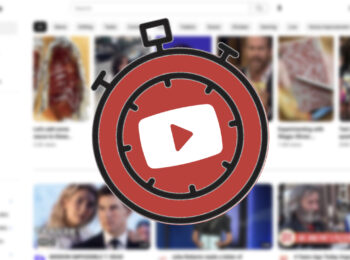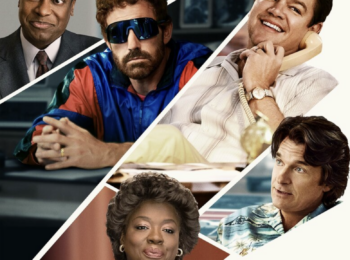Ideas
Marketable – Ep. 7 – Could the Apple Vision Pro Bring the Next Big Shift in Advertising?

About the session
This past Tuesday, Apple unveiled their first augmented/virtual reality headset, marching into the fray with companies like Meta and Sony Playstation. But for Ryan and Jeff, what sets this headset apart is that it’s not just for gaming, or wandering around in virtual worlds; it’s a workstation, entertainment arena, and, yes, also a gaming device. Is this something that, like the iPhone, is going to lead to new, more dynamic opportunities for marketers to reach their audience. Spoiler alert: Ryan is a hard-yes on this question.
Agenda
– Introduction of Apple’s AR VR headset, Apple Vision Pro
– Comparison to the iPhone launch
– Potential uses beyond gaming
– Content creation and storytelling possibilities
– Adoption by consumers and businesses
– Future developments and challenges
Takeaways
Takeaway 1: Apple’s new AR/VR headset, the Apple Vision Pro, has the potential to revolutionize content creation and consumption.
The Apple Vision Pro, a long-awaited augmented reality (AR) and virtual reality (VR) headset, has been announced, and it promises to change how we create and consume content. The device is not just for gaming, but also for productivity, media consumption, and more. Jeff mentions that the headset differentiates itself from other headsets in the market as it has “so many uses beyond just gaming.”
Ryan echoes this sentiment and emphasizes the excitement around the device’s capabilities, saying, “This is the first time I felt since 2007, when they announced [the iPhone], that I was like, I’m getting that day one right. I don’t care how much it costs. I have to have that. I have to play with it. I have to learn how to use it.” Jeff adds that the device’s ability to integrate seamlessly with Apple’s ecosystem and app store could help it gain widespread adoption more quickly than previous AR/VR headsets.
Takeaway 2: The Apple Vision Pro could enable more immersive experiences for marketing and storytelling.
The Apple Vision Pro’s AR/VR technology presents new opportunities for marketers and content creators to tell more immersive stories. Ryan points out that the headset could be particularly useful for clients in the architectural space, stating, “The ability to capture an actual space and the feeling of a space would be invaluable to them and would really open up new avenues of communicating their product.” Additionally, the device’s spatial video capture capabilities open up possibilities for new forms of filmmaking and storytelling.
Ryan highlights the potential of the Apple Vision Pro to transform the way we consume content: “I think that this stands a good chance of being the future of the way that we consume media. And therefore, that has implications for us, as in our case, filmmakers. But it has implications for anybody that is in the content creation business and the content consumption business, where you’re trying to sell something.”
Takeaway 3: The Apple Vision Pro may face some challenges in adoption but could lead to exciting new developments in technology.
While the Apple Vision Pro may face some initial challenges in adoption due to its high price point and the need for users to wear a headset, Jeff and Ryan agree that the device has the potential to revolutionize the way we interact with technology. Jeff says that the major adoption of the headset will come when we no longer need to wear it, moving towards a Minority Report-like experience. However, they also note that younger generations may be more inclined to adopt the technology as they grow up with it, making its use more widespread in the future.
Ryan emphasizes the importance of being an early adopter and exploring the potential uses of the Apple Vision Pro in content creation and marketing: “My feeling is generally when Apple commits itself to something, especially something of this significance, it’s probably going to take off. And it would behoove us as creators, as marketers, to figure out how can we use this to tell our stories, to tell our brand stories, to tell our product stories, our service stories.” This could lead to innovative new developments in the way we create and consume content in the coming years.
Insights surfaced
– The Apple Vision Pro is a more robust product than previous AR VR headsets, offering a wide range of applications beyond gaming.
– The headset has the potential to revolutionize content creation, marketing, and storytelling, as well as change how consumers interact with products and services.
– Adoption by businesses and consumers may be slow initially due to the high price point and the need to wear a headset, but younger generations may be more open to the technology.
– The integration with Apple’s ecosystem, including the App Store and other devices, could help drive adoption and content creation.
– Challenges include the need for new infrastructure to support the creation and consumption of spatial videos and the development of new ways to edit and shoot content for the headset.
Key quotes
– “This does feel substantial. I don’t think it won’t have immediate adopters the way we did with the iPhone.”
– “They’re really saying this has so many uses beyond just gaming.”
– “I think that this stands a good chance of being the future of the way that we consume media.”
– “I’m excited to think about the waterfall of this. How do we edit for it?”
– “It’s going to move forward, right?”




